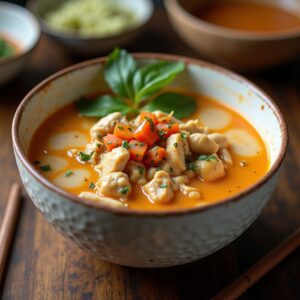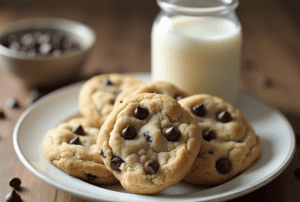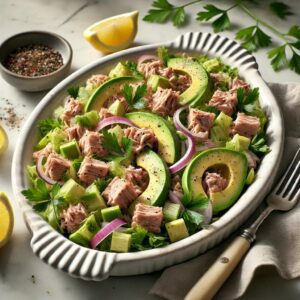

The Ultimate Guide to Measuring Conversions in the Kitchen


Arya Soleil
Have you ever found yourself in the middle of a recipe only to realize that you need to convert tablespoons to cups or fluid ounces? Whether you’re doubling a recipe, cutting it in half, or simply working with limited measuring tools, understanding kitchen conversions is essential for smooth and successful cooking.
This guide provides a clear breakdown of how tablespoons, cups, and fluid ounces convert, making it easier to adjust your recipes on the fly. Let’s dive into these essential conversions and why they matter in everyday cooking and baking.
Understanding Kitchen Measurements: Why Conversions Matter
Before we explore the detailed conversion chart, let’s understand why knowing measurement conversions is crucial.
Accurate baking is key because baking is a science, and even small miscalculations in measurements can lead to dense cakes, flat cookies, or dry bread. Scaling recipes is essential when doubling a recipe for a family gathering or halving a recipe for a smaller batch, as understanding conversions helps maintain the correct balance of ingredients.
Not every kitchen has all the measuring tools available, so substituting utensils with proper conversions allows you to work with what you have. Precise measurements ensure consistency in cooking so your dishes turn out the same every time, whether you’re making sauces, soups, or baked goods.
Kitchen Measurement Conversion Chart
Below is a handy conversion guide to help you swap between tablespoons, cups, and fluid ounces with ease.
Tablespoon to Cup & Fluid Ounce Conversions

These conversions are essential when following recipes, especially when working with both metric and imperial systems.
Practical Applications: When Do These Conversions Come in Handy?
Now that you have a conversion reference, let’s explore some real-world kitchen scenarios where knowing these measurements can make all the difference.
Baking Precision: Perfecting Cakes, Cookies, and Bread
Baking requires exact measurements to achieve the right texture and consistency. If a recipe calls for ⅔ cup of sugar, but you only have a tablespoon, knowing that 10 tablespoons + 2 teaspoons equal ⅔ cup can save the day!
Example:
- Recipe calls for: ½ cup of butter
- You only have tablespoons: Use 8 tablespoons instead.
Cooking Sauces, Dressings, and Marinades
Liquid measurements like oils, vinegars, and broths often require conversions. If a recipe requires ⅓ cup of soy sauce, but you’re using a measuring spoon, you’ll need 5 tablespoons + 1 teaspoon.
Example:
- Recipe calls for: ¼ cup of olive oil
- You only have tablespoons: Use 4 tablespoons instead.
Scaling Up or Down a Recipe
If you’re cooking for a crowd or just for yourself, scaling recipes up or down can be much easier with quick conversions.
Example:
- Recipe calls for: 1 cup of milk
- You want to halve the recipe: Use 8 tablespoons (½ cup) instead.
Substituting Measuring Tools
If you don’t have a cup measure, knowing that 16 tablespoons = 1 cup helps you measure out ingredients without needing extra equipment.
Example:
- No 1-cup measuring cup? Just use 16 tablespoons to get the same amount.
Additional Tips for Measuring Success in the Kitchen
Use the Right Measuring Tools
Dry ingredients should be measured with dry measuring cups (flat-topped cups for scooping and leveling), while liquid ingredients should be measured with a liquid measuring cup (with a spout for easy pouring).
Level Off Dry Ingredients
When measuring dry ingredients like flour or sugar, use a knife to level off the top for precise measurement. Scooping directly from the bag can cause inaccurate measurements.
Spoon and Level vs. Scooping
For flour and powdered ingredients, spoon the ingredient into the measuring cup and level off rather than scooping directly. This prevents over-packing and keeps measurements accurate.
Convert Fluid Ounces to Milliliters for International Recipes
If you’re following metric recipes, here’s a quick conversion:
- 1 fluid ounce (fl. oz) = 29.57 milliliters (mL)
- 8 fl. oz (1 cup) = 236.6 mL
Final Thoughts: Mastering Kitchen Conversions for Stress-Free Cooking
Knowing how to convert tablespoons to cups and fluid ounces can make your cooking more efficient, accurate, and stress-free. Whether you’re following a recipe, adjusting serving sizes, or making substitutions, these conversions help ensure perfect results every time.
Next time you’re in the kitchen, keep this handy measurement guide close by—you never know when you’ll need it! Happy cooking! 🍳🥄
Recommended Reads

- March 22, 2025
Anti-Inflammatory Breakfasts: Easy Recipes to Start Your Day Right
Home News Healthy Habits & Lifestyle Health Conditions &...


- March 22, 2025
Questioning the FDA: A Deeper Look at the Food and Drug Administration’s Role
Home News Healthy Habits & Lifestyle Health Conditions &...


- March 22, 2025
Make ‘Raw Milk’ Just ‘Milk’ Again: A Closer Look at the Raw Milk Debate
Home News Healthy Habits & Lifestyle Health Conditions &...


- March 22, 2025
The Power of Sweet Potatoes: A Superfood for Eyes, Skin, and Beyond
Home News Healthy Habits & Lifestyle Health Conditions &...


- March 22, 2025
Sugar-Free: A Code Word for “We’ve Replaced It with Something Worse for You”
Home News Healthy Habits & Lifestyle Health Conditions &...


- March 22, 2025
The Evolution of Food: How Modern Diets Are Fueling Chronic Disease
Home News Healthy Habits & Lifestyle Health Conditions &...

The Ultimate Guide to Measuring Conversions in the Kitchen

Have you ever found yourself in the middle of a recipe only to realize that you need to convert tablespoons to cups or fluid ounces? Whether you’re doubling a recipe, cutting it in half, or simply working with limited measuring tools, understanding kitchen conversions is essential for smooth and successful cooking.
This guide provides a clear breakdown of how tablespoons, cups, and fluid ounces convert, making it easier to adjust your recipes on the fly. Let’s dive into these essential conversions and why they matter in everyday cooking and baking.
Understanding Kitchen Measurements: Why Conversions Matter
Before we explore the detailed conversion chart, let’s understand why knowing measurement conversions is crucial.
Accurate baking is key because baking is a science, and even small miscalculations in measurements can lead to dense cakes, flat cookies, or dry bread. Scaling recipes is essential when doubling a recipe for a family gathering or halving a recipe for a smaller batch, as understanding conversions helps maintain the correct balance of ingredients.
Not every kitchen has all the measuring tools available, so substituting utensils with proper conversions allows you to work with what you have. Precise measurements ensure consistency in cooking so your dishes turn out the same every time, whether you’re making sauces, soups, or baked goods.
Kitchen Measurement Conversion Chart
Below is a handy conversion guide to help you swap between tablespoons, cups, and fluid ounces with ease.
Tablespoon to Cup & Fluid Ounce Conversions

These conversions are essential when following recipes, especially when working with both metric and imperial systems.
Practical Applications: When Do These Conversions Come in Handy?
Now that you have a conversion reference, let’s explore some real-world kitchen scenarios where knowing these measurements can make all the difference.
Baking Precision: Perfecting Cakes, Cookies, and Bread
Baking requires exact measurements to achieve the right texture and consistency. If a recipe calls for ⅔ cup of sugar, but you only have a tablespoon, knowing that 10 tablespoons + 2 teaspoons equal ⅔ cup can save the day!
Example:
- Recipe calls for: ½ cup of butter
- You only have tablespoons: Use 8 tablespoons instead.
Cooking Sauces, Dressings, and Marinades
Liquid measurements like oils, vinegars, and broths often require conversions. If a recipe requires ⅓ cup of soy sauce, but you’re using a measuring spoon, you’ll need 5 tablespoons + 1 teaspoon.
Example:
- Recipe calls for: ¼ cup of olive oil
- You only have tablespoons: Use 4 tablespoons instead.
Scaling Up or Down a Recipe
If you’re cooking for a crowd or just for yourself, scaling recipes up or down can be much easier with quick conversions.
Example:
- Recipe calls for: 1 cup of milk
- You want to halve the recipe: Use 8 tablespoons (½ cup) instead.
Substituting Measuring Tools
If you don’t have a cup measure, knowing that 16 tablespoons = 1 cup helps you measure out ingredients without needing extra equipment.
Example:
- No 1-cup measuring cup? Just use 16 tablespoons to get the same amount.
Additional Tips for Measuring Success in the Kitchen
Use the Right Measuring Tools
Dry ingredients should be measured with dry measuring cups (flat-topped cups for scooping and leveling), while liquid ingredients should be measured with a liquid measuring cup (with a spout for easy pouring).
Level Off Dry Ingredients
When measuring dry ingredients like flour or sugar, use a knife to level off the top for precise measurement. Scooping directly from the bag can cause inaccurate measurements.
Spoon and Level vs. Scooping
For flour and powdered ingredients, spoon the ingredient into the measuring cup and level off rather than scooping directly. This prevents over-packing and keeps measurements accurate.
Convert Fluid Ounces to Milliliters for International Recipes
If you’re following metric recipes, here’s a quick conversion:
- 1 fluid ounce (fl. oz) = 29.57 milliliters (mL)
- 8 fl. oz (1 cup) = 236.6 mL
Final Thoughts: Mastering Kitchen Conversions for Stress-Free Cooking
Knowing how to convert tablespoons to cups and fluid ounces can make your cooking more efficient, accurate, and stress-free. Whether you’re following a recipe, adjusting serving sizes, or making substitutions, these conversions help ensure perfect results every time.
Next time you’re in the kitchen, keep this handy measurement guide close by—you never know when you’ll need it! Happy cooking! 🍳🥄
Recommended Reads

- March 22, 2025
Anti-Inflammatory Breakfasts: Easy Recipes to Start Your Day Right
Home News Healthy Habits & Lifestyle Health Conditions &...


- March 22, 2025
Questioning the FDA: A Deeper Look at the Food and Drug Administration’s Role
Home News Healthy Habits & Lifestyle Health Conditions &...


- March 22, 2025
Make ‘Raw Milk’ Just ‘Milk’ Again: A Closer Look at the Raw Milk Debate
Home News Healthy Habits & Lifestyle Health Conditions &...


- March 22, 2025
The Power of Sweet Potatoes: A Superfood for Eyes, Skin, and Beyond
Home News Healthy Habits & Lifestyle Health Conditions &...


- March 22, 2025
Sugar-Free: A Code Word for “We’ve Replaced It with Something Worse for You”
Home News Healthy Habits & Lifestyle Health Conditions &...


- March 22, 2025
The Evolution of Food: How Modern Diets Are Fueling Chronic Disease
Home News Healthy Habits & Lifestyle Health Conditions &...



